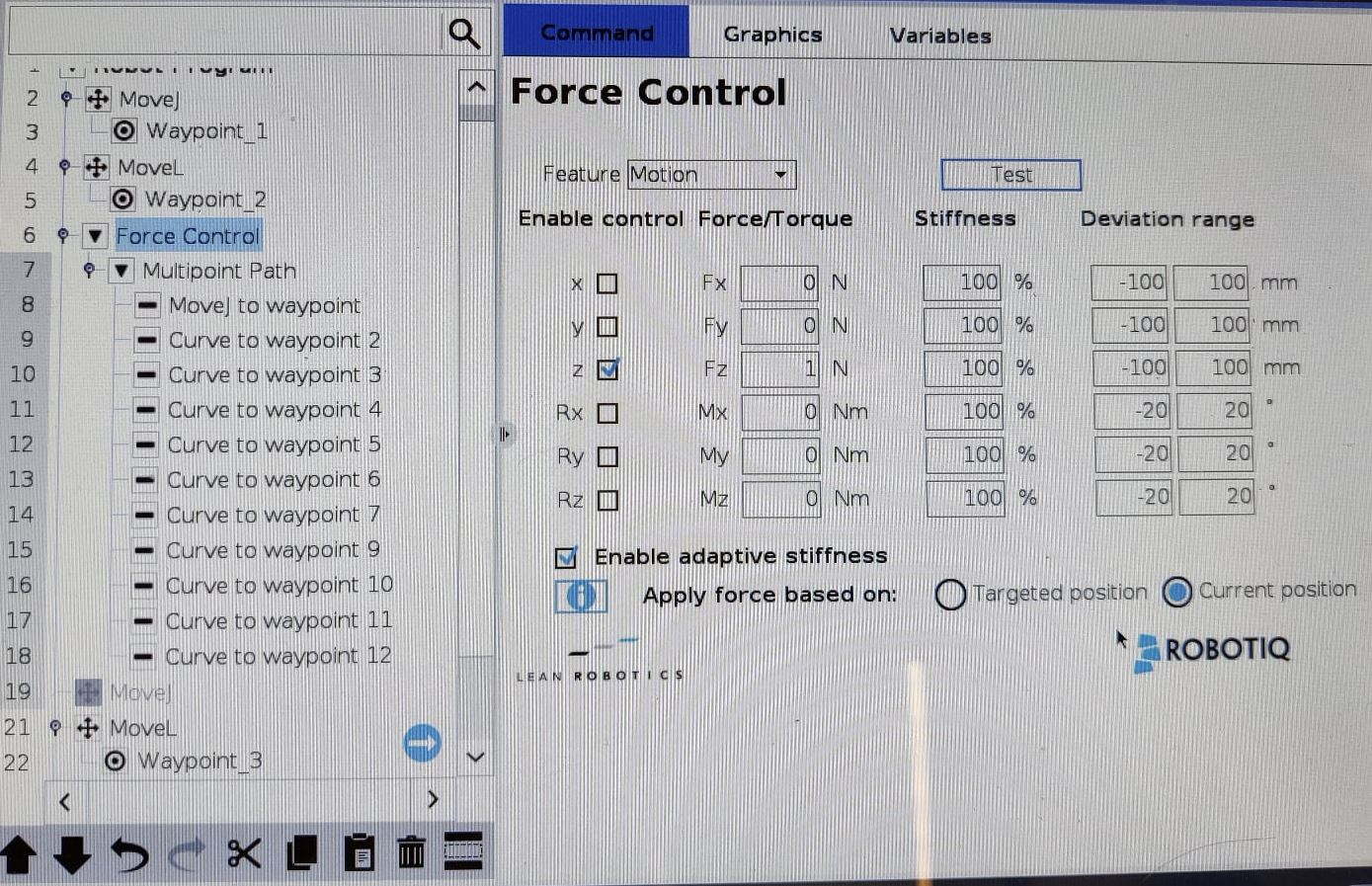@jarkar
I open a support ticket so that our team could eventually propose a solution with our finishing solution.

The Dof Community was shut down in June 2023. This is a read-only archive.
If you have questions about Robotiq products please reach our support team.
If you have questions about Robotiq products please reach our support team.
 bcastets
bcastets

The idea of mine is moving the robot according the red arrow and the same time robot slightly push in the direction of the blue arrow. The blue arrow indicating the force must turn at the same rate as the robot moves in the direction of the red arrow. By the normal "Force"-command robot get stuck in to the "bottom" of the round shape.
Any idea how this kind of function is possible to perform?